The number of birds in the wild that can hover are relatively common, particularly for predatory birds. In this article I’ll be going over 8 different bird species that can hover to satisfy your curiosity.
- Hummingbirds
- Kestrels
- Pied Kingfisher
- Terns
- Hawks
- Rough Legged Buzzards
- Eagles
- Vultures
8 Birds That Can Hover
1. Hummingbirds

Hummingbirds are among the smallest birds on this list and are scattered all across the globe consisting of 360+ species. Their normal day to day consists of searching for food, perching on feeders attempting to drink some sugar, flying with their potential mate and of course hovering above a bed of flowers sipping on that sweet old nectar.
Hummingbirds make up one of only a few avians in the animal kingdom that are able to hover at an almost constant rate throughout the day and even fly backward when need be.
They hover by flapping their wings 80 times a second which allows them to hover in place when sipping on nectar or grabbing small insects to consume.
2. Kestrels
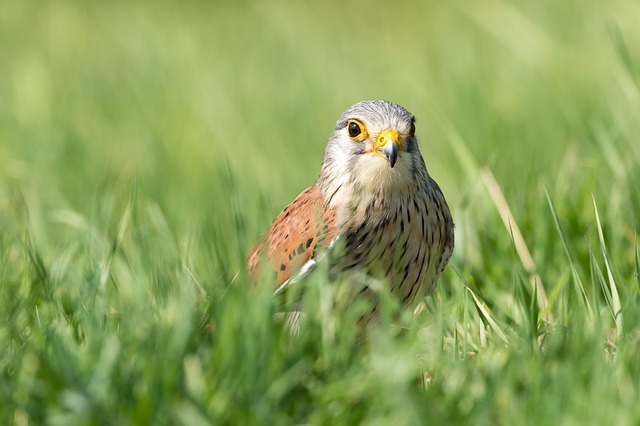
Kestrels are found within a variety of habitats, from moor and heath, to farmland and urban areas but, they tend to avoid dense forests. The number of different kestrel species in the wild are quite vast too although not nearly as diverse as hummingbirds.
Kestrels are also competent at hovering where some even do so 60 feet (18.3m) in the air, if not even a little higher on occasion.
They will often hover above motorway/freeway verges waiting for small mammals among other prey catch their eye, once they’ve identified their target they will eventually scoop down and fetch it.
The reason why kestrels are able to hover like they do is down to the stiffness of their feathers. They also angle their neck forwards whilst implementing tiny pauses throughout to minimise the energy so that they can hover over an extended period of time. They also fly into the wind which allows to hover in place.
3. Pied Kingfisher
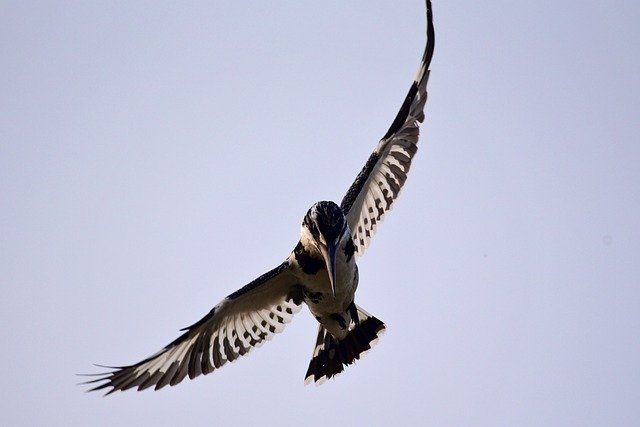
Pied Kingfisher can be found within Africa and Asia where they will often be seen near rivers and streamsides, particularly when they’re looking to hunt for food.
Pied kingfishers will hover above these rivers waiting for prey to catch their eyes before swooping down and capturing them. At around 25cm and weighing in at around 84 grams, these kingfishers are actually the largest birds in the world than can hover through the power of their wings alone.
They tend to beat their wings 10 times per second so it isn’t nearly as efficient as wind assisted hovering therefore, to maintain their size and health a pied kingfisher needs to consume more than half their body weight in food every single day.
4. Terns
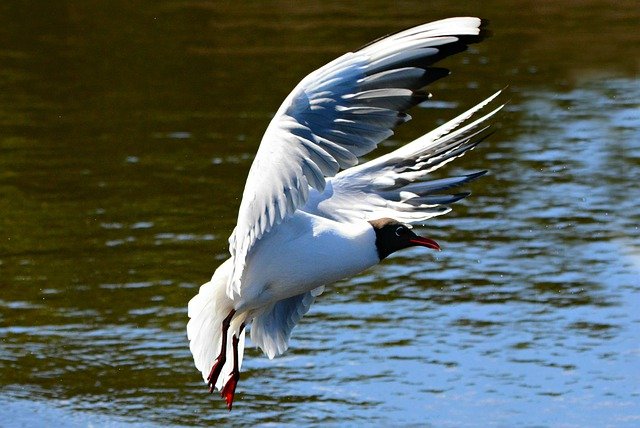
Terns are birds that spend the majority of their time within coastal areas or around the sea. They will often be spotted near rivers, seas, and/or wetlands where they have adapted the ability to literally skim and hover across the water.
Hovering is accomplished by using wind. This allows them to float with minimal to no wing movement. This in turn means terns can float across the seabed in a hover like state.
This hovering technique allows terns to live as effectively as they do because they can better see fish among other food sources to pick up and consume due to their closer proximity with the seabed.
5. Hawks

Hawks much like most birds of prey use hovering when laying wait for prey to hunt.
Hawks are hunters by nature therefore they will use a variety of tactics to hunt their prey. As for how they hover, they use the technique of wind hovering where they will fly towards a breeze and in essence use that breeze to keep them in place.
Their stiffer feathers and usage of head movement to minimise energy consumption plays a big part in how long they can maintain this too.
6. Rough Legged Buzzards
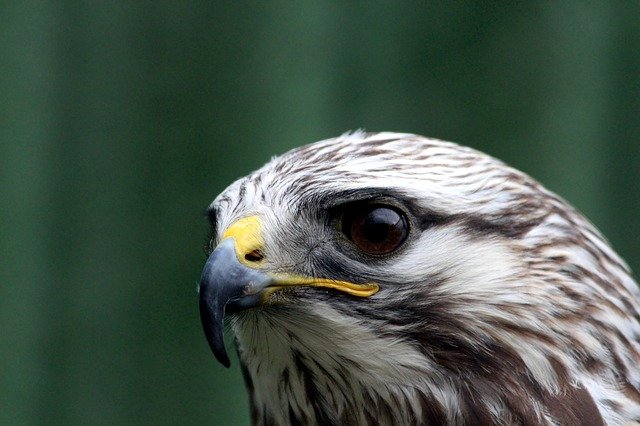
Rough-legged buzzard are birds of prey found in the colder parts of North America, Russia, and Europe.
Much like the majority of animals on this list they generally hover using the head wind technique aka wind hovering as they’re no light enough to maintain a hovering stance using only their wings.
Hovering is simply a way for these birds to watch over a specific area in search of food and once the prey they’re searching for is found, they will swoop down and capture it.
7. Eagles

Eagles can also hover, especially when they’re looking to stop in a particular position just before landing and swooping up their prey.
This is one of the many tactics these birds use when looking to capture prey or when looking out for any potential dangers they may face.
It’s an excellent skill to have as not only does it help in scanning environments but allows the eagles to land safely too.
8. Vultures
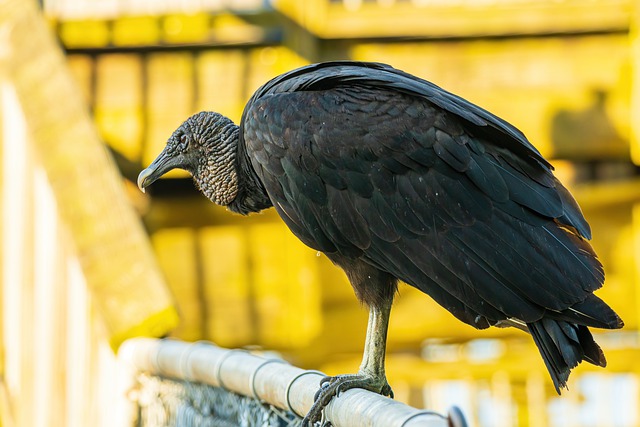
Vultures, the scavengers of the sky, also hover when seeking to find food or when in the middle of eating their carrion based meals.
They are more or less the biggest birds on this list too.
Hovering allows them to get first pickings on food especially animal that are on their last legs.
Vultures will often lazily wait around waiting for carrion which could either be perched on a ledge on hover and glide across the sky. Obviously taking into account their size it would be very difficult to beat their wings to sustain the motion.
Therefore, they tend to use the sun rays that bounce of rocks or ledges, which causes hot air to rise (also called thermals), to keep them afloat whilst using minimal effort.
Amhil Khan, a dedicated nature enthusiast and the founder of BirdsOfTheWild.com, is a passionate advocate for the captivating world of avian wonders. With a deep-seated curiosity about the intricate lives of birds, Amhil’s journey began as a fascination and has evolved into a mission to inspire others to appreciate and protect these magnificent creatures.
Amhil’s love for birds led to the creation of Birds of the Wild, a platform where his expertise in ornithology, coupled with his captivating storytelling, provides readers with an immersive and educational experience. Through his lens and words, he captures the essence of birds in their natural habitats, offering a glimpse into their behaviors, migrations, and the ecosystems they inhabit.

